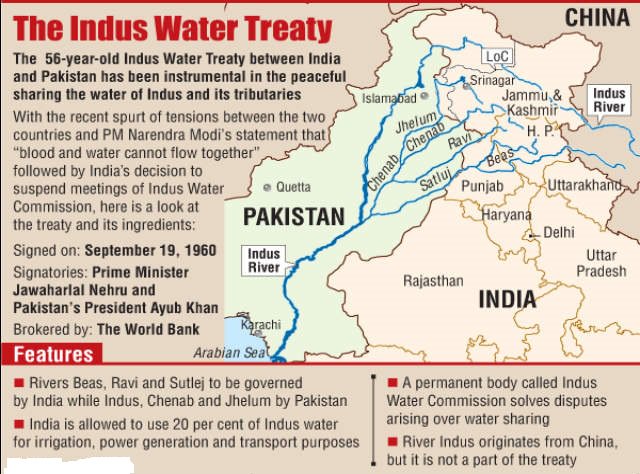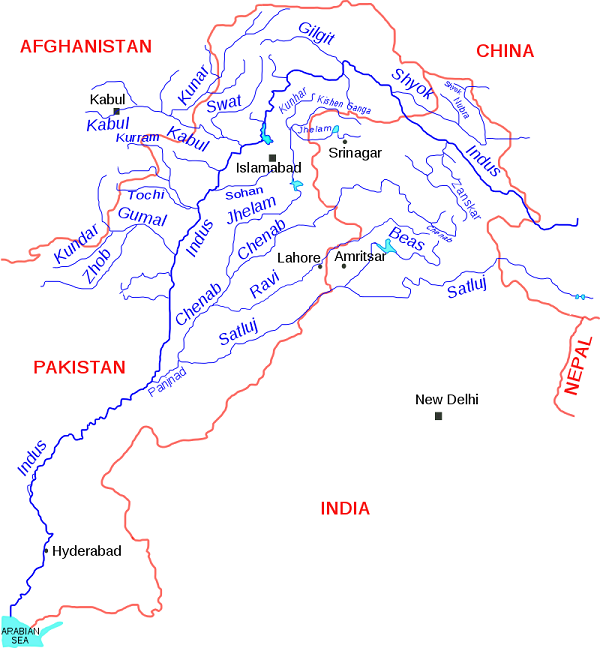Focus: GS-II International relations, GS-I Geography
Why in news?
India has refused a request by Pakistan to hold a meeting on issues around the Indus Water Treaty (IWT) as India had suggested a virtual conference but Pakistan had insisted on a physical meeting.
Details
- The practice at the IWT meetings is that they are led by Indus Water Commissioners from both countries and a range of issues on construction of dams and hydropower projects concerning the Indus river system are discussed.
- Among the key points on the table was evolving a procedure to solve differences on technical aspects governing the construction of the Ratle run-of-the-river (RoR) project on the Chenab in the Kishtwar district of Jammu and Kashmir.
- India has called for the appointment of a ‘neutral’ party while Pakistan favours a Court of Arbitration to agree upon a final resolution on the design parameters of this hydropower project.
Significant Points
- According to the terms of the IWT, India has the right to build RoR projects on the three ‘western’ rivers — the Chenab, Jhelum and Indus — provided it does so without substantially impeding water flow in Pakistan downstream.
- Pakistan believes that the project’s current design does pose a serious impediment and has told the World Bank that it wants a Court of Arbitration (CoA) set up to decide on the issue.
- India says this is only a technical issue and mutually solvable and has agreed to a ‘neutral party’ since a CoA potentially could stall any form of construction on all Indus projects.
Indus Waters Treaty (IWT)
- The Indus Waters Treaty is a water-distribution treaty between India and Pakistan, brokered by the World Bank, to use the water available in the Indus River and its tributaries.
- The Indus Waters Treaty (IWT) was signed in Karachi in 1960.
- The Treaty gives control over the waters of the three “eastern rivers” — the Beas, Ravi and Sutlej to India, while control over the waters of the three “western rivers” — the Indus, Chenab and Jhelum to Pakistan.
- India was allocated about 16% of the total water carried by the Indus system while Pakistan was allocated the remainder.
- The treaty allows India to use the Western River waters (the ones in Pakistan’s control) for limited irrigation use and unlimited non-consumptive use for such applications as power generation, navigation, floating of property, fish culture, etc.
- It lays down detailed regulations for India in building projects over the western rivers.
- The preamble of the treaty recognises the rights and obligations of each country in the optimum use of water from the Indus system in a spirit of goodwill, friendship and cooperation.

Indus River Basin
- The Indus River (also called the Sindhū) is one of the longest rivers in Asia and the longest river of Pakistan.
- It flows through China (western Tibet), India (Ladakh) and Pakistan.
- Its estimated annual flow is estimated to be twice that of the Nile River making it one of the largest rivers in the world in terms of annual flow.

- The Zanskar is its left bank tributary in Ladakh.
- In the plains, its left bank tributary is the Panjnad which itself has five major tributaries, namely, the Chenab, Jhelum, the Ravi, the Beas, and the Sutlej.
- Its principal right bank tributaries are the Shyok, the Gilgit, the Kabul, the Gomal, and the Kurram.
-Source: The Hindu, Hindustan Times



